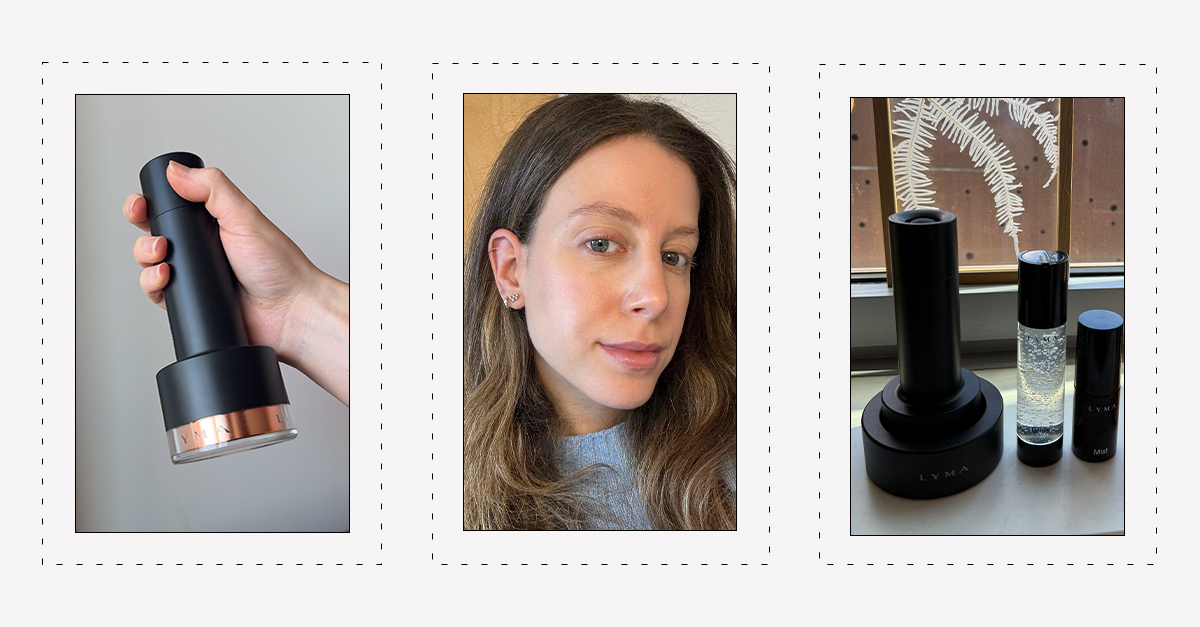If a skincare product promises to magically treat every single skincare concern you can think of—wrinkles, texture, hyperpigmentation, and even sagging—I approach it with a very critical (bordering on dubious) eye. That’s certainly how I felt when I came across the Lyma Laser, a spendy, handheld gadget that claims to have 100 times the power of standard LED devices. “Okay, but is this legit?” I recently asked celebrity facialist Lord Gavin McLeod-Valentine as he floated the device along the contours of my cheekbones, to which he replied: Yes, yes it is. Pair that expert stamp of approval with a smattering of celebrity endorsements—including Sofia Richie Grainge (“Within a week, this transformed my skin”) and Kate Hudson (“Not an ad, just telling you this is one of the best things I’ve ever used on my face”)—and I was finally ready to put the $2700 device to the test. That is, until I found out the Lyma Laser Pro had officially earned FDA approval in the U.S.
Marketed as three Lyma Lasers in one, the Pro promises to deliver transformative results at a much faster rate than the original beams. The $6000 dollar question then becomes, does it actually live up to the hype? I decided to test it for 49 days to find out. The Lyma Laser Pro is definitely an investment, and I don’t take that lightly, so below, I made sure to outline every detail you need to know—including my own before and after photos—before committing to a purchase. Let’s dive in, shall we?

What is the Lyma Laser Pro?
Like the original at-home Lyma device, the Lyma Laser Pro uses low-level, near-infrared light to stimulate collagen and cell renewal deep within the skin. Unlike traditional laser technology—which requires “microdamaging” the skin to kick-start its natural healing process and produce collagen—Lyma’s cold-laser approach doesn’t involve any stress to the skin whatsoever. You don’t feel a thing, but the technology actually triggers a genetic switch inside each skin cell that encourages it to create collagen and elastin at a faster rate; and collagen and elastin, as we know, are directly responsible for skin’s plump, firm appearance.
Those speedier cells are also able to enhance blood flow, thereby increasing the delivery of oxygen and nutrients to the skin. This, in turn, helps with other aspects of skin healing (dark spots, inflammation, dullness, rosacea, etc.). Since there’s no excessive heat or damage to the skin, there’s also no risk of scarring or safety concerns for those with deeper skin tones. Trust, though, that the near-infrared light does penetrate the skin’s deepest layers, all the way down to the muscle tissue that sits behind it.
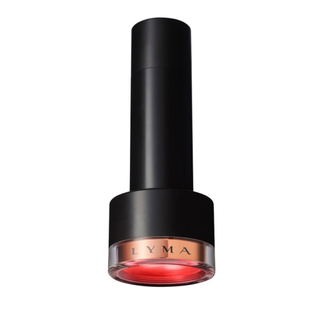
What’s the difference between Lyma and Lyma Pro?
The Lyma and Lyma Pro contain the exact same laser technology, so you really can’t go wrong with either device. You use both devices the exact same way for the exact same amount of time, but because the Lyma Pro has a bigger treatment lens (30cm2 versus 8cm2), it yields results much faster.
“It’s not just a simple case of increasing the exposure lens because of the energy dose involved,” craniofacial, aesthetic, and plastic surgeon Graeme Glass, MD, PhD, Lyma’s aesthetic director, explained during a recent brand panel. “Everything has to be increased if you want the same energy dose but over a larger area. That’s why it had to be completely reengineered to be able to make that happen.” Essentially, in order to treat larger areas like the neck and décolletage, the Pro contains the power of three Lyma Lasers in one.
Of course, that extra power comes with a cost. The Pro is tagged at $5995, more than double the original Lyma’s $2695. For both, buyers have the option to pay in installments: $500 and $225 per month, respectively.
You can technically use the Lyma Pro on targeted areas of your face—I have been, and I’ve seen some impressive results!—but it’s best for transforming the full face, neck, and body. “If you’re younger and are using it to prevent or to slow down the aging process, or you’re just dealing with a small scar, area of pigmentation, or rosacea that you want to get rid of, [the original Lyma Laser] is best suited for that,” Lyma founder Lucy Goff shared on the panel. “The feedback that we were getting was to transform larger areas on the face and body without it taking a super-long time.” Thus, the Lyma Pro was born.
|
Model |
Lyma Laser |
Lyma Laser Pro |
|---|---|---|
|
Lens Size |
8cm2 |
30cm2 |
|
Power |
500mW |
1450mW |
|
Depth |
808nm |
808nm |
|
Cost |
$2695 |
$5995 |
How to use the Lyma Laser Pro
All you need to do is switch on the device, hold it directly on the area you’d like to treat for three minutes, then repeat until you’ve treated your entire face (plus any other areas of concern, like the neck, chest, arms, etc.). The device has an automatic timer that will flash six times every three minutes, signaling you to move on to the next section.
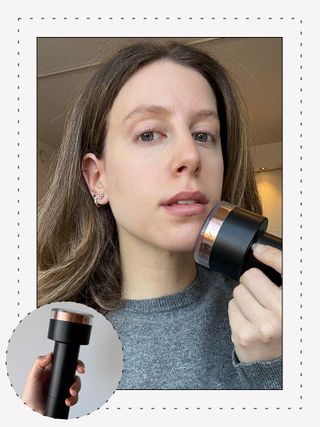
A little insider tip: A red light will illuminate once you turn on the device, but according to Goff, that’s really just for aesthetics. “It’s just a red LED to tell you the device is switched on because you can’t see near-infrared light with human eyes,” she shares. “You’d never know whether the device was switched on or not.”
You can theoretically glide the device across your skin during that three-minute time period—and if you do, I recommend using the Lyma Oxygen Mist & Glide to minimize tugging and optimize the laser’s results—but it’s not necessary. Simply hold the device in place and let it work its high-tech magic.
Now, that magic does come with a catch: You have to use the Lyma Pro every single day in order to see results. Depending on how many treatment areas you’re prioritizing, that can mean up to 30 minutes daily. If you can commit to that cadence for the first 12 weeks, you can go into maintenance-mode and use it two to three times per week. But those first few months are really critical.
My experience and review
I’ll be honest: I didn’t want to like the Lyma Pro. See, I’m of the belief that taking care of your skin doesn’t have to be a wildly expensive venture. Drugstore heroes can perform just as well—if not better—than luxury, sensorial options on the market, so the thought of recommending a $6000 laser felt a little ludicrous. What could it possibly accomplish that my meticulous skincare routine and hoard of LED masks couldn’t? The answer, I soon found out, was quite a lot—albeit in a sneaky, gradual fashion.
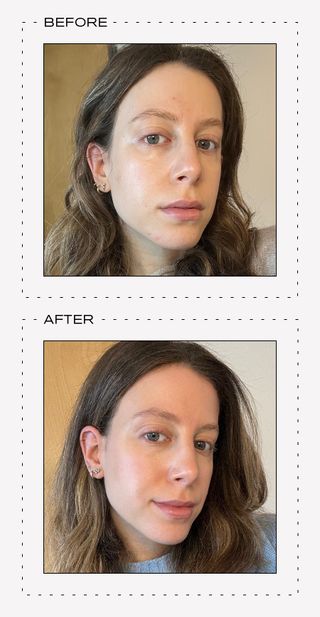
Looking back, the Lyma Pro couldn’t have come into my life at a better time. I was experiencing some gnarly, inflamed breakouts on my chin and forehead, and my skin could not shake its dull, puffy appearance, no matter how many hydrating masks and serums I slathered on. (I can likely chalk it all up to stress since I’m currently planning a wedding.) I also just found out I have early signs of rosacea (fun!), as my skin easily flushes from a mere touch.
I started using the Lyma Pro at night, after I was all buttered up with silky serums and night creams. I typically spent 30-ish minutes treating my problem areas (both sides of my chin, jawline, and forehead) and giving my neck some extra love. It was definitely a huge time commitment, but it helped immensely if I multitasked with a good Netflix binge. (Once the episode was over, so was my Lyma routine. Easy!)
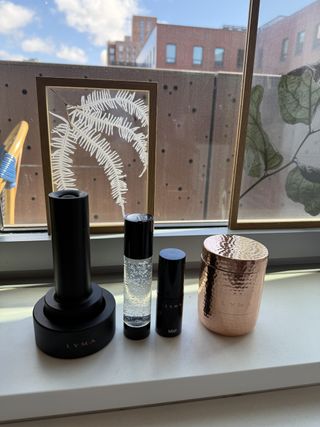
I began my testing at the end of March. It’s now mid-May (49 days later to be exact), and my skin is absolutely thriving. I didn’t change a thing besides the Lyma Pro addition, and somehow my tone is brighter, my texture feels smooth as butter, and the breakouts are completely healed—not a dark spot in sight. Acne is an inflammatory skin condition, so the laser’s ability to reduce inflammation and quickly shuffle nutrients to the cells is what I suspect helped speed up the healing process. Not to jinx my progress, but I also haven’t experienced a breakout since.
I don’t struggle with wrinkles or crepey skin at this point in my life (dark spots and dehydration are my main gripes at the moment), but the inflammation and dullness were making the fine etchings I do have seem even more prominent. After incorporating the Lyma Pro, I have noticed those fine lines smooth out—namely the faint expression lines in between my brows and the horizontal bands around my neck (aka, “tech neck”).
I still have some time to hit the recommended 12-week mark, but my skin has already responded with such positive results. (The brand says you’ll start to notice changes after 30 days, and I definitely concur!) I’ve committed to a daily cadence this whole time, save for a weekend trip when I—sigh—forgot to stash it in my carry-on. When I arrived back home, I reached right for my Lyma Pro, and my post-flight complexion looked immediately calmer and brighter the next day.
Is the Lyma Laser Pro really worth it?
Yes, the Lyma Pro is an investment—of both time and money. It’s not for everyone’s budget and lifestyle (again, that daily commitment!), but if you do have specific areas of concern you’d like to treat—scars, dark spots, fine lines, crepiness—it’s a great, effective alternative to pricey in-office lasers. Believe the testimonials because it really does work; it’s just a matter of how much you feel comfortable spending on a gentler, at-home tool versus more immediate (though often harsher) aesthetic procedures. You also do have to stay consistent with it in order to reap the benefits, so if the commitment doesn’t seem realistic for your schedule, I’d suggest saving your money for an in-office treatment.
I personally love my Lyma Pro and will continue to use it daily. However, I’m probably a better candidate for the original Lyma Laser since I’m more focused on preventative skin aging and precise patches of inflammation. The smaller treatment lens might be better suited for my skincare goals, so I could have fared well with the more affordable laser.
That said, I’m certainly not mad about the Pro’s more intense power and quicker timeline! I’ll also have the device forever, so when I do ultimately experience more aggressive signs of skin aging, I’ll be happy I have the device with three times the intensity. All that to say: If you think you might want the benefits of the larger surface area in the near future, then I’d suggest snatching the Pro version. It’s more money upfront, but I’d argue it’s worth dropping the extra coin now than potentially purchasing a whole new device down the line. Trust me—once you begin to notice the laser’s effects, you’ll be happy you went Pro.
Shop the full Lyma routine

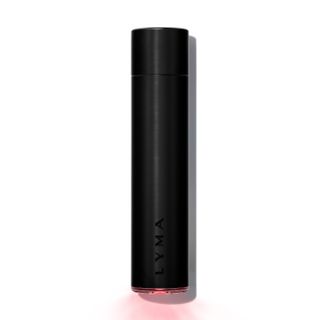
The original Lyma laser boasts identical near-infrared technology with a smaller treatment lens and a slightly more affordable price.
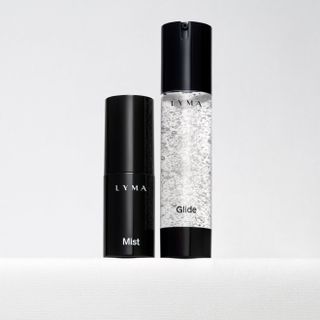
If you’re going to float the device across your skin, I highly recommend grabbing the complementary Mist & Glide. They not only minimize skin tugging but enhance the results of your treatment; in fact, the brand claims the results are 100 times more effective than an oxygen facial.
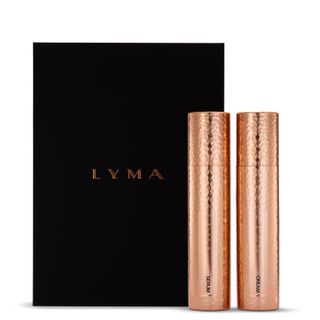
Lyma
Lyma Skincare Starter Kit
You can totally use your own skincare products before using the Lyma Laser, but this potent, bioactive serum-and-cream duo was specifically designed to enhance the technology.
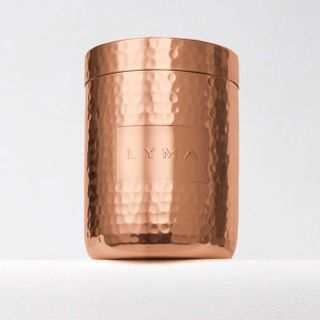
If the Lyma Laser is a do-it-all skincare gadget, then the Lyma Supplement is the ultimate multitasking ingestible. With 11 clinically backed ingredients, these capsules help address your sleep, anxiety, focus, immunity, and complexion.

